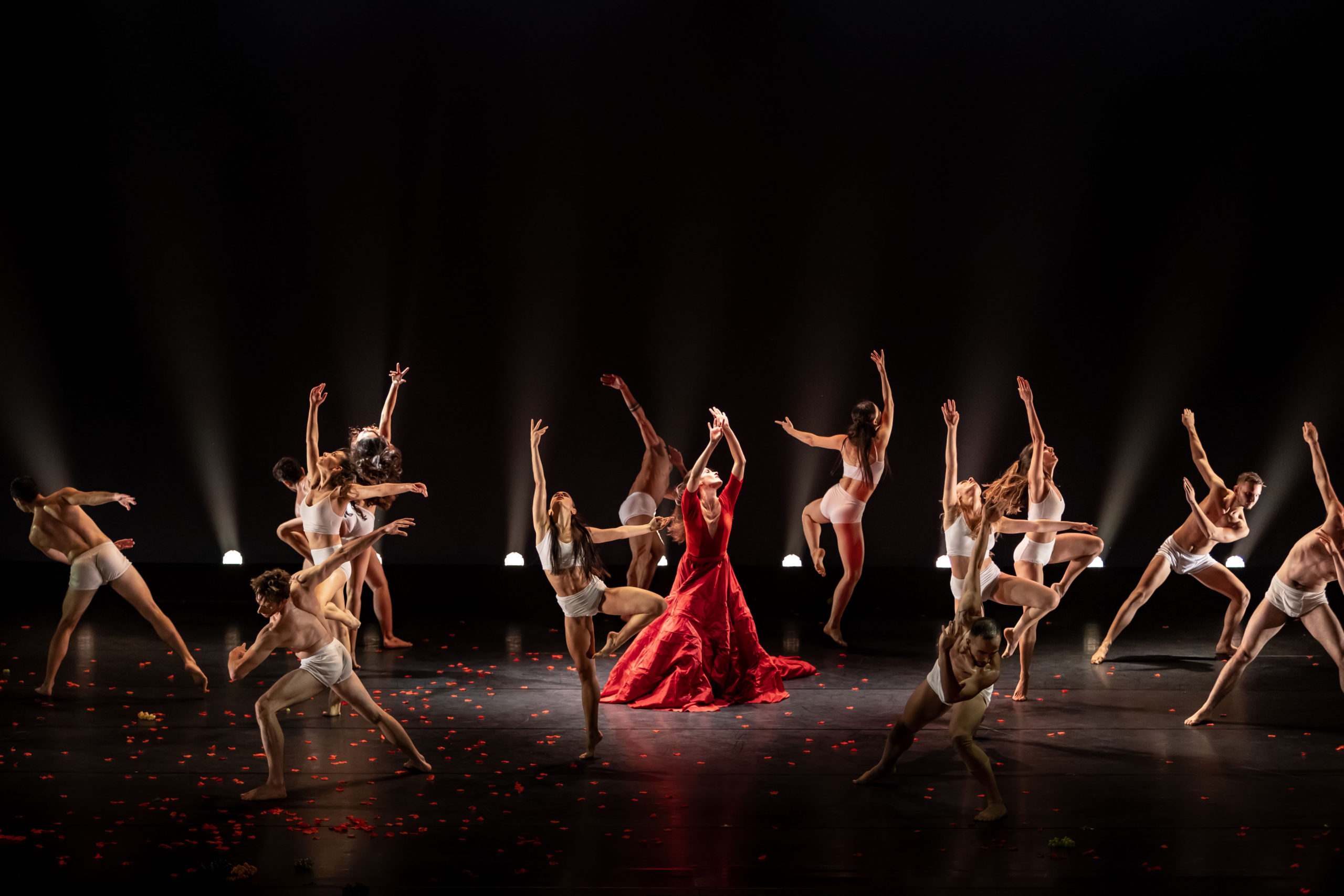Carmina Burana by the Israeli Kamea Dance Company – A Revolutionary Ballet.
Here, masks are not worn on the face, but on the back of the head; cloaks are worn backwards, the young men here are feminine, and the young women are masculine. Orff’s music plays loudly during the group scenes, while in the duets, the encounters unfold in silence.
The cantata of Carl Orff has been adapted into ballet numerous times, but Tamir Ginz, the founder and artistic director of Kamea, approached it in his own unique way. This is a new, very earthy interpretation of Carmina Burana.
The young, bisexual bodies – sometimes in flesh-colored underwear and bras, symbolizing nudity, sometimes in black, sometimes in red – express their feelings with such erotic desire that the lines “Sanguis bibimus, corpus edimus” (“We drink blood, we taste flesh”, brr!) sound like child’s play. The young people are desperate and reckless, like medieval vagabonds – but unlike their distant ancestors, they are isolated from the outside world: falling outside of time and space, they are doomed to endlessly circle in their strange masquerade.
Earthly pleasures and worldly delights are symbolized in this sensually erotic ballet by a bunch of grapes – honoring Bacchus, the dancers compose poems and songs in motion, celebrating youth, desire, and the beauty of physical love. It must be acknowledged that throughout the performance, the choreography succeeds in matching the musical imagery – Ginz adopts a literal approach, where every movement carries meaning.
This choreography not only aligns with the music but brings it to life through motion – Ginz is bold in his use of various means, each movement contributing to a rich tapestry of expression that conveys emotion and musical imagery. Erotic duets of pleasure are naturally part of the physical thriller aspect of the work. Translating each theme from the cantata into neoclassical language, the choreographer meticulously dissects rituals of courtship, flirtation, and marital games. Ultimately, all this culminates in an extravagant, wild fantasy – a hymn to the drunken freedom from propriety, a catharsis of both spiritual and physical love.
There is no innocence of medieval dances here – but there are red dresses, ecstatic spins, and unions replacing humble prayer. If you try to imagine a soul soaring to heaven, you simply won’t have time: the Wheel of Fortune stubbornly spins in hellish flames, pulling the sinners straight into the fiery Gehenna. Add to that texts in ancient languages (the languages are dead, but the ballet is shamelessly alive) and pagan melodies of inhuman beauty – and you will witness much more. Even what is hidden behind the movement of hands and feet and the scorching – passion shredded – group scenes.
It is worth mentioning that the work of Orff, the collection of songs by the wandering vagabonds of the 13th century, titled “Carmina Burana: Secular Songs for Performance by Soloists, Choruses, Instruments, and Magical Images” – and as for the images, Tamir Ginz certainly delivered. What’s more interesting is that he doesn’t reinvent the wheel: all his signature poses are drawn directly from classical ballet, whose lexicon is spun in the hurricane rhythms of our age.
P.S. The ballet Carmina Burana was created by Ginz in 2007 at the request of the Kypria festival in Cyprus and after its premiere was shown in many countries around the world, including at the 2008 Beijing Olympics. Well, the youthful temperament of Kamea’s dancers certainly does its job – fortune is definitely on their side.

